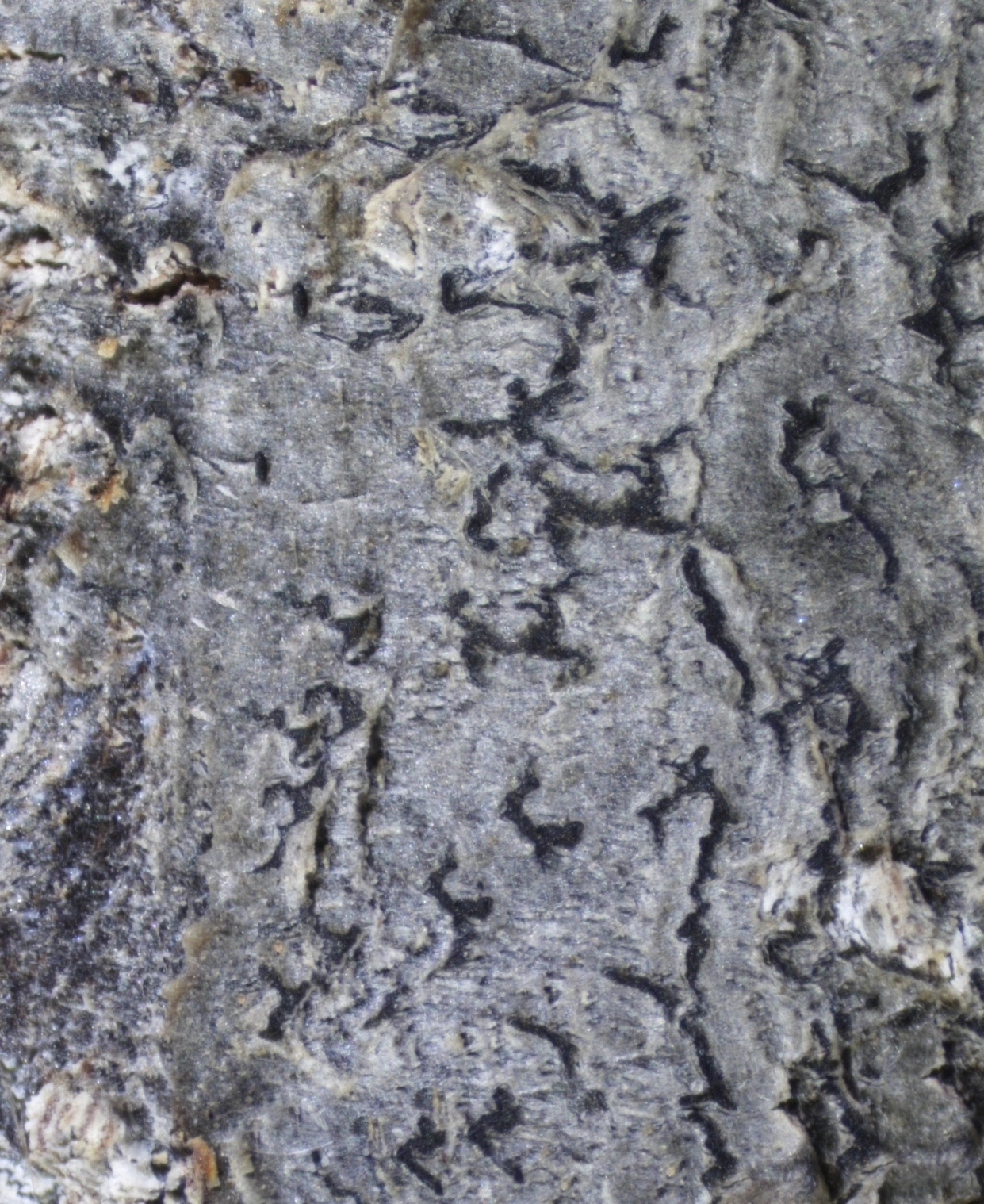Naevia dispersa
Naevia dispersa collected from Fraxinus excelsior near Munich in Germany in 1896 (O-L-148243).
Naevia dispersa is a seldom collected pioneer species on deciduous trees. It is characterized by minute, lirellate, brownish black apothecia on an indistinct, weakly lichenized thallus with trentepohlioid photobiont. The colorless spores are 1-septate.
- Innhold
- Description
- Ecology
- Distribution in Norway and the Nordic countries
- Global distribution
- Similar species
- Remarks
Description
Thallus
The thallus is thin and indistinct; however, it often discolors the host bark white to pale cream. The margin is not determinate. The photobionts are sparse. They belong to a species of the family Trentepohliaceae.
Fruitbodies
The apothecia are either level with the thallus or indistinctly raised, brownish black, and without pruina. Their shape varies from rounded or angular to typically lirellate or weakly branched. They are 0.1–0.8 × 0.1–0.2 mm in size and 30–60 μm tall. The disc is flat to slightly convex and matt or weakly glossy. A thin layer of bark tissue is often observed along the apothecial margin, and patches of host bark may be present on the apothecial disc as well.
The epithecium is 5–10 μm tall and olive-brown in color.
The hymenium is colorless and 30–40 μm tall.
The hypothecium is unpigmented and up to 10 μm tall.
The paraphysoids are 1–1.5 μm wide. Their tips are slightly widened to 2–2.5 µm.
The asci are broadly obovoid, without stipe, 20–30 × 13–19 µm, and 8-spored.
The spores are colorless, obovoid, often slightly constricted at the septum, 9–15 × 3–5 μm in size, and divided by 1 transverse septum.
Anamorph
Pycnidia are brownish black, immersed in the thallus, and ca 100 µm in size. The wall is olive-brown. The rod-shaped conidia are 3–5 × 0.5–1 μm in size.
Chemistry
The thallus does not react with C, K, KC, Pd, or UV (C–, K–, KC–, Pd–, UV–). Lichen secondary compounds have not been detected by TLC.
The hymenium reacts I+ blue mixed with red and KI+ blue. A KI+ blue ring structure has been observed in the asci.
The brown pigment in the epithecium and in the wall of the pycnidia changes to greenish in K solution.
Naevia dispersa collected from Frangula alnus near Zürich in Switzerland (O-L-148243).
Ecology
Naevia dispersa is a pioneer species typically found on smooth bark of deciduous trees. It often occurs on branches and twigs, or were competition by other lichen species is low. Like N. punctiformis, it appears to occur in natural and anthropogenic habitats, but to avoid the shady interior of forests. Reported host trees in Norway include acorn (Acer spp.), European ash (Fraxinus excelsior), common hazel (Corylus avellana), and rowan (Sorbus aucuparia).
Naevia dispersa is widely distributed in temperate to boreal climates in Europe and North America.
Distribution in Norway and the Nordic countries
Naevia dispersa is known in Norway from few scattered localities in the Oslo area and along the coast up to Vega Islands. In the Nordic countries, it is also known from Denmark, Finland and Sweden.
Global distribution
Naevia dispersa is widespread in temperate to boreal regions of Europe and North America but missing from the British Islands.
Naevia dispersa collected from Frangula alnus near Zürich in Switzerland (O-L-148243).
Similar species
Naevia dispersa resembles a small N. punctiformis, but differs in the clearly elongated apothecia, spores with only 1 transverse septum, and lichenized thallus. It cannot easily be confused with any other species occurring in Norway.
Remarks
Naevia dispersa is mainly known from historical collections in Norwegian herbaria. The current distribution and abundance are uncertain and in need of further study.
Literature
Sundin R (1999). Phylogenetic and taxonomic studies within Arthonia Ach. (Ascomycetes, Arthoniales). Botaniska institutionen, Stockholms universitet, Stockholm.



